August 8, 2025
Explore the most urgent cybersecurity skills gap statistics of 2025, including unfilled roles, breach costs, and the real reasons behind the shortage.
Mohammed Khalil

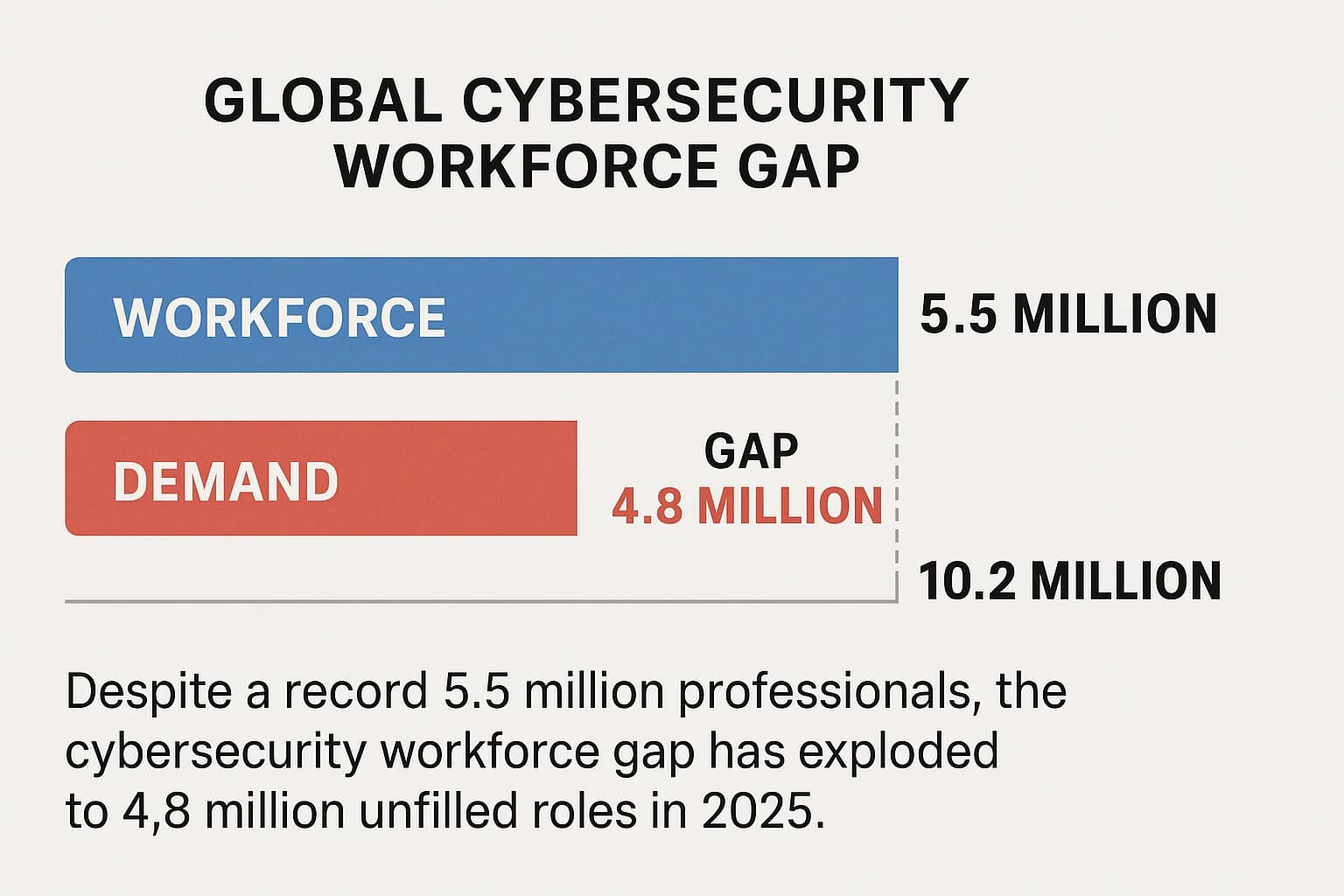
We're facing a strange paradox in cybersecurity. The global workforce has swelled to an all time high of 5.5 million professionals, yet this growth has effectively flatlined, increasing by a mere 0.1% since 2023. At the same time, the global cybersecurity skills gap, the shortfall between the number of skilled defenders available and the number needed to secure our systems, has exploded to a staggering 4.8 million unfilled roles.
So, what gives?
The 2025 cybersecurity talent shortage is no longer a simple pipeline issue. It has morphed into a complex, multi faceted crisis driven by a perfect storm of factors. It's a raw headcount deficit, a critical mismatch of modern skills, and for the first time a resource crisis fueled by economic headwinds that are forcing budget cuts and layoffs even as threats escalate.
The stakes have never been higher. With 74% of security professionals calling the current threat landscape the most challenging in five years and the average cost of a data breach hitting a record $4.88 million, this cyber workforce gap is a direct threat to business survival. This isn't just an HR problem to solve; it's a strategic risk that demands an immediate and intelligent response.
For years, we've talked about the skills gap as a pipeline issue. That's still true, but it misses the bigger picture of what's happening in 2025. The very nature of the gap has changed. It’s deeper, more nuanced, and driven by forces both inside and outside our organizations.
Let’s start with the hard numbers. The latest (ISC)² Cybersecurity Workforce Study, available at ISC2 2024 Cybersecurity Workforce Study, estimates the global demand for cybersecurity professionals is 10.2 million. With a current workforce of 5.5 million, we are left with a gap of 4.76 million. This isn't because people aren't interested in the field. The problem is that demand is accelerating far faster than our ability to train and absorb new talent.
Worse, recent economic pressures have slammed the brakes on hiring. While some regions like the Middle East, Africa, and Asia Pacific saw modest workforce growth, North America and Europe actually saw reductions. This slowdown, combined with ever increasing need, has caused the gap to widen dramatically.
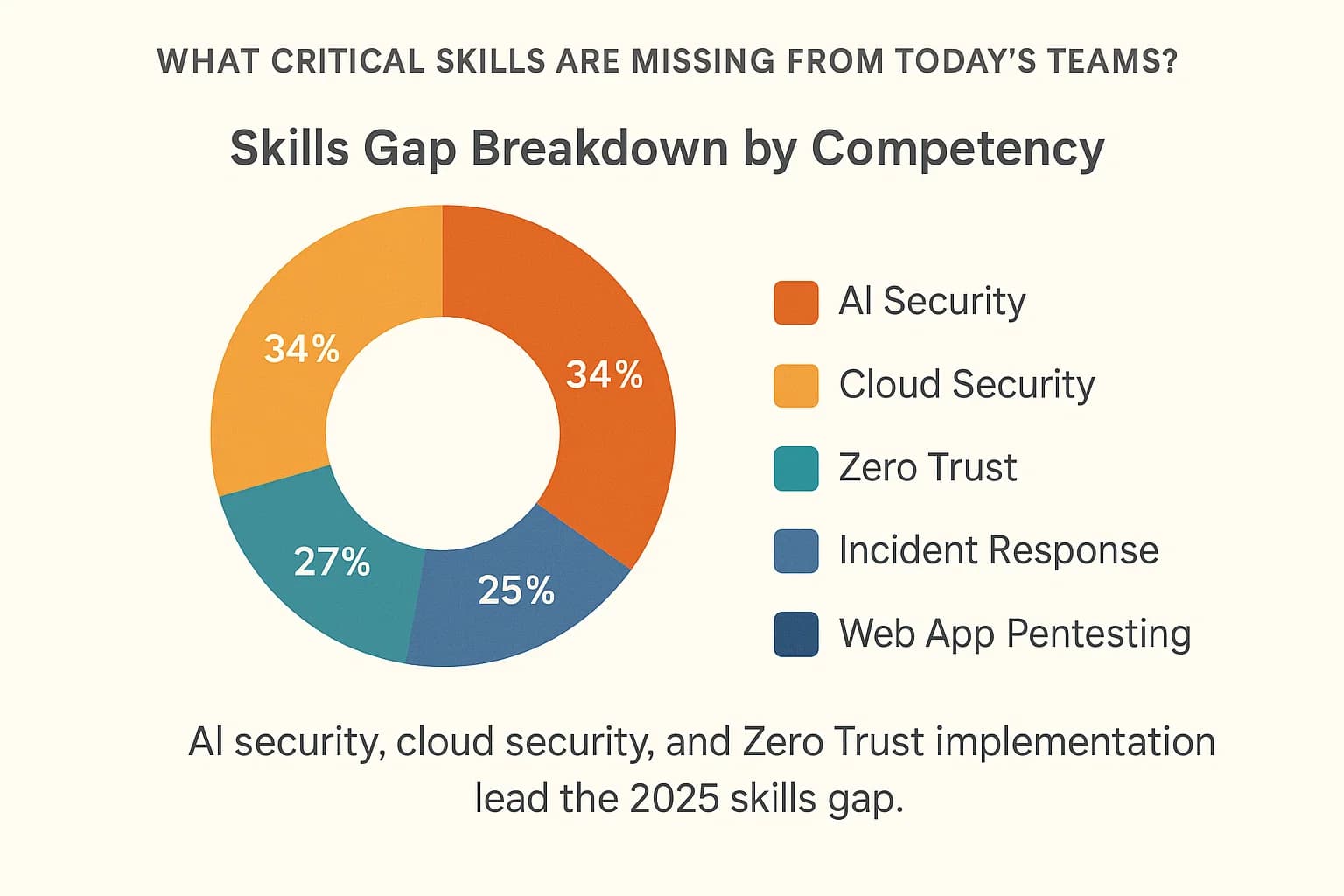
Even if you could magically fill every open role tomorrow, you’d still have a problem. A huge part of the skills gap is qualitative, not just quantitative. Many security teams are functionally unprepared for modern threats because they lack the right expertise.
In my experience working with Fortune 500 clients, I’ve seen firsthand how a lack of cloud security specialists can lead to critical misconfigurations underscoring that a fully staffed team isn’t enough if the right skills are missing.
According to the 2024 (ISC)² study, the top five skills gaps plaguing organizations are :
Interestingly, while these technical skills are desperately needed, hiring managers are also increasingly prioritizing non technical skills like problem solving, critical thinking, and communication. This suggests a growing recognition that while technology like AI will automate some tasks, human ingenuity is irreplaceable for managing the tools and guiding the overall strategy.
Here’s the biggest shift in 2025: for the first time ever, the leading cause of the cybersecurity skills gap is not an inability to find qualified people. It’s a lack of money.
The (ISC)² study reveals that "lack of budget" is now the top reason for both talent shortages (33%) and skills gaps (39%). This is a direct result of the current economic climate. In 2024, organizations reported significant resource reductions :
This has created a dangerous situation where the need for defenders has never been greater, yet companies are actively cutting back on the resources required to hire and train them. The skills gap has evolved from a talent pipeline problem into a direct reflection of an organization's financial health and risk tolerance.
This isn't an abstract problem for boardrooms to debate. The skills gap has tangible, painful consequences that show up in breach reports, operational downtime, and on the bottom line.
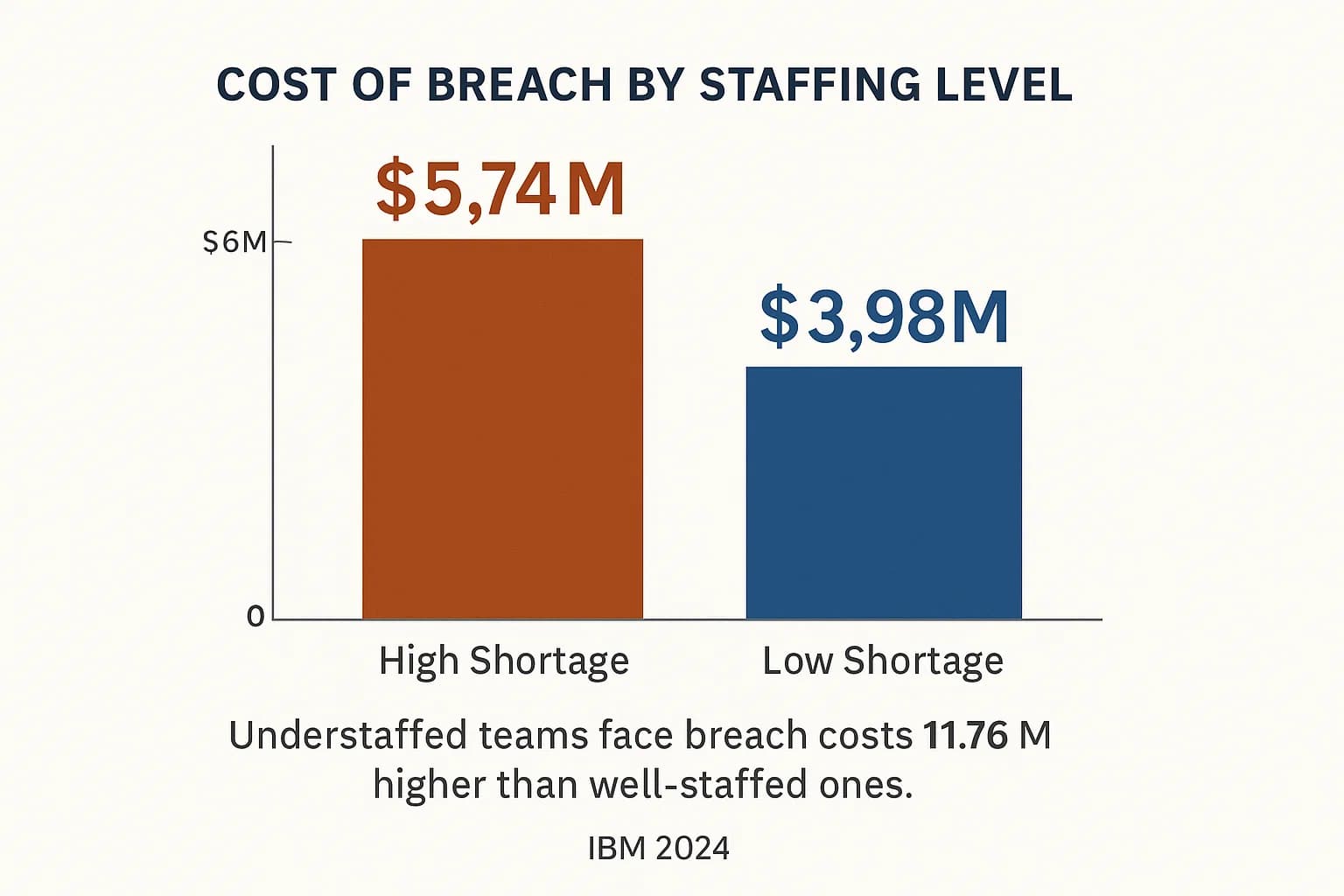
The numbers don't lie. According to IBM's 2024 Cost of a Data Breach Report, available at (), the global average cost of a breach has soared to a record $4.88 million. That’s a 10% jump in just one year, the largest since the pandemic began.
Here is the most critical connection: organizations with a high level security skills shortage saw average breach costs of $5.74 million. Those with a low level or no shortage saw costs of just $3.98 million. The difference is a staggering $1.76 million directly attributable to the skills gap.
Why? Because understaffed teams are overwhelmed. They can't monitor alerts effectively, patch systems quickly, or respond to incidents fast enough. This gives attackers more time inside a network known as "dwell time" to find valuable data and do more damage. For instance, breaches that start with take an average of 292 days to identify and contain, the longest of any attack type.
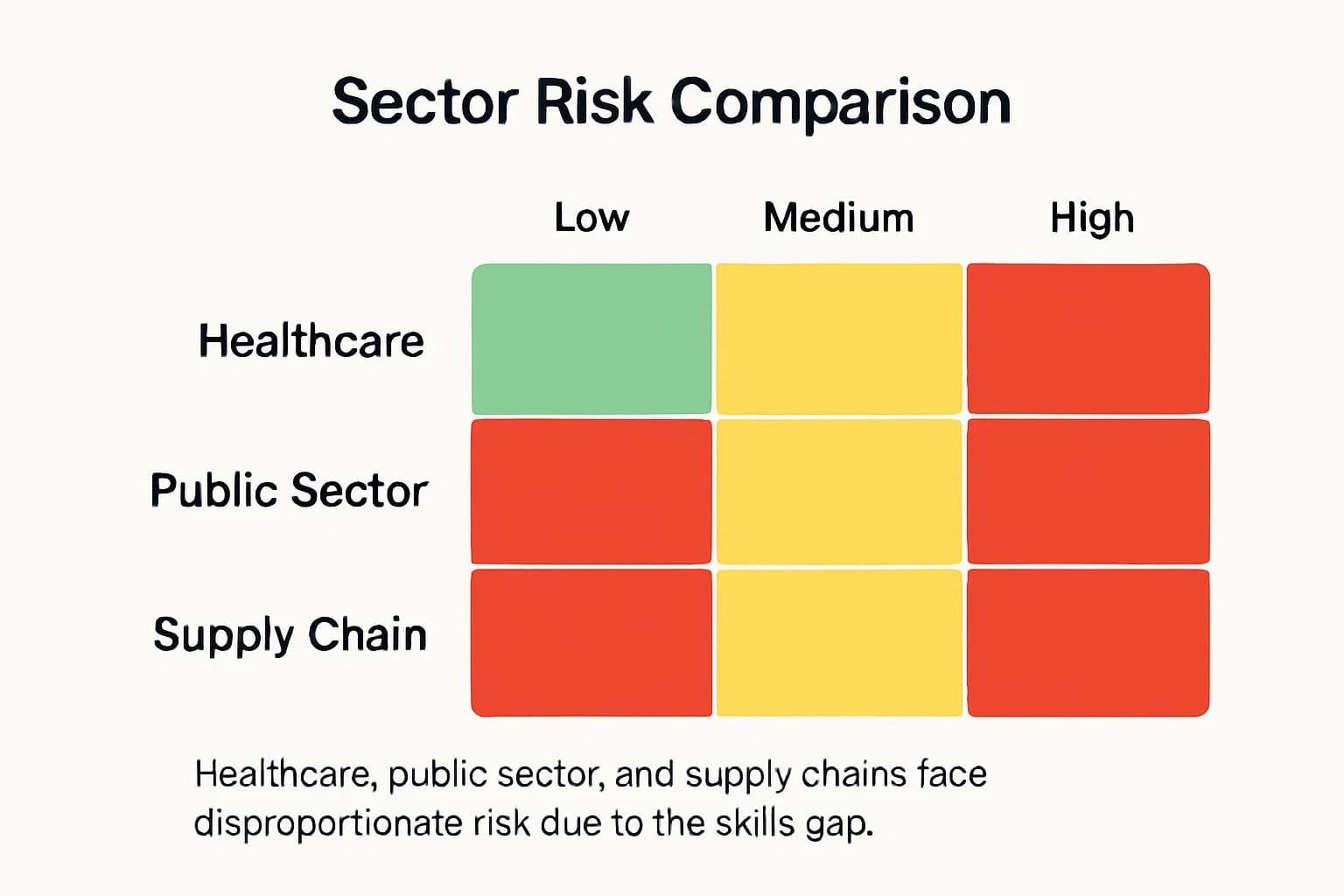
While every industry feels the pain, the skills gap is a potential catastrophe for the sectors we rely on most.
Case Insight: Healthcare on High Alert
The healthcare sector is a perfect storm of high value data, interconnected legacy systems, and chronically underfunded IT departments. Here, the skills gap doesn't just lead to financial loss; it can disrupt patient care and put lives at risk. The industry consistently suffers the highest data breach costs, averaging an eye watering $9.77 million per incident in 2024.
The massive events of 2024 and 2025, such as the Change Healthcare attack affecting over 192 million people, serve as a terrifying illustration. While reports don't explicitly name the skills gap as the cause, these are textbook examples of what happens when a highly targeted industry is overwhelmed. A lack of skilled personnel to manage complex systems and respond to sophisticated threats undoubtedly makes such catastrophic breaches more likely.
The Public Sector and Supply Chain Under Strain
The public sector is another area of major concern. The World Economic Forum's 2025 Global Cybersecurity Outlook reports that 49% of public sector organizations lack the necessary talent to meet their security goals, a shocking 33% increase from 2024.
This risk is amplified by our reliance on complex digital supply chains. The WEF identifies supply chain vulnerabilities as the top ecosystem cyber risk, with 54% of large organizations calling it their biggest barrier to resilience. Your internal team can be world class, but if you lack the skilled personnel to properly vet your third party vendors, you inherit all of their vulnerabilities.
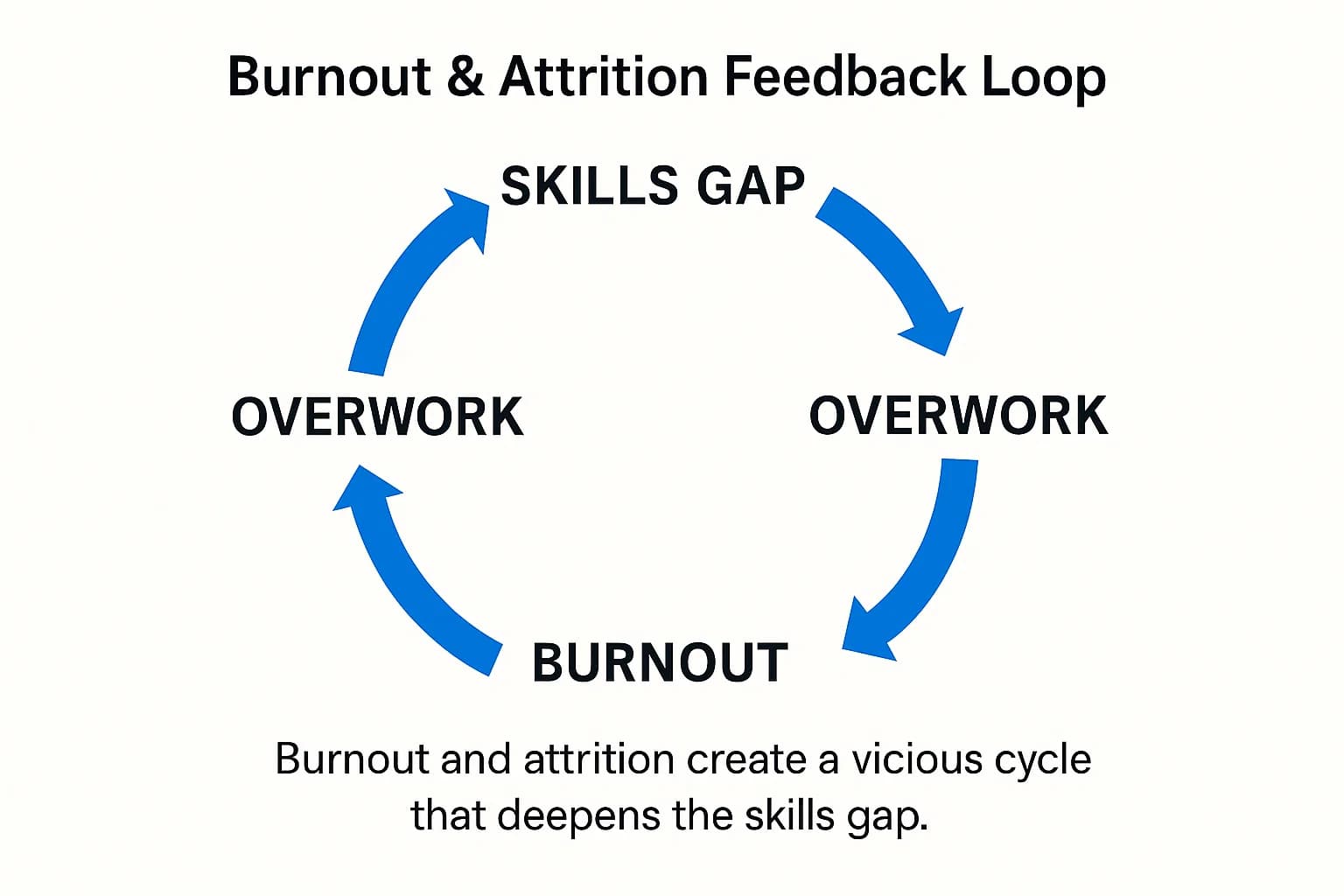
The skills gap isn't just about a failure to hire new people. It's also about a systemic failure to keep the talented professionals we already have.
The cybersecurity profession is in the middle of a burnout epidemic. According to Gartner, nearly half of all cybersecurity leaders will change jobs by 2025 due to work related stress. ISACA's 2024 research backs this up, with 66% of professionals stating their role is significantly more stressful now than it was five years ago.
What’s driving them to the exit? ISACA’s report identifies the top reasons people leave their jobs :
This creates a vicious cycle: the skills gap increases the workload, which causes burnout, which leads to high turnover, which widens the skills gap even further.
Organizations often shoot themselves in the foot with flawed hiring practices. There's a major disconnect between the skills employers say they want and what their job descriptions demand. Many job postings for entry level roles still demand multiple advanced certifications and unrealistic years of experience.
This gatekeeping chokes the talent pipeline. The (ISC)² study found that nearly one third (31%) of security teams have zero entry level professionals. This is a systemic failure to invest in growing talent. The talent pool also remains under diversified women and still comprise only about 20-25% of the cybersecurity workforce, indicating we’re not tapping all potential talent.
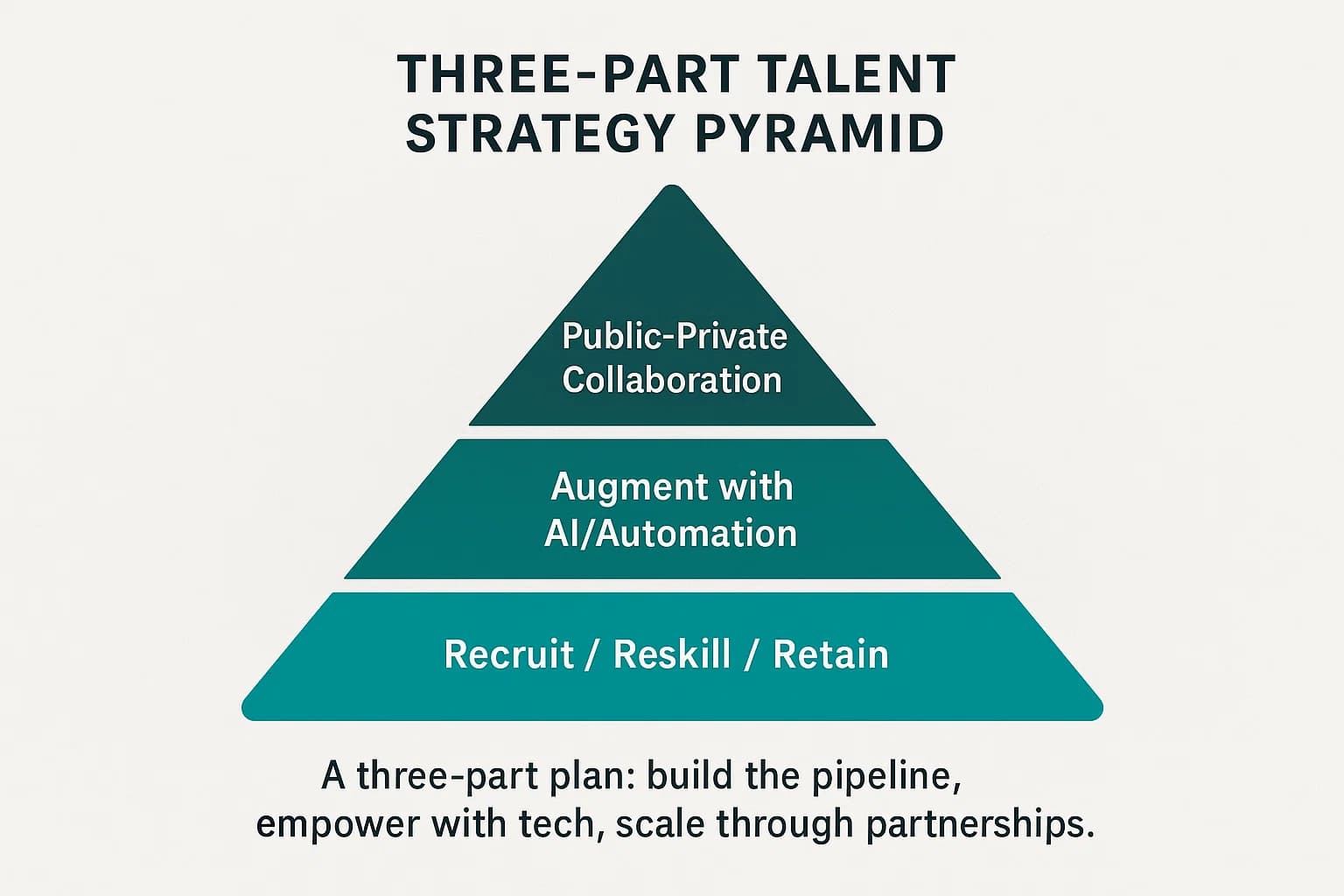
Solving this crisis requires a fundamental shift in strategy. We need to move beyond just trying to "hire more people" and adopt a holistic approach that builds resilience from the inside out.
It all starts with people. If you can't find them, build them. If you have them, keep them.
Embrace Apprenticeships and "New Collar" Talent
The traditional four year degree is no longer the only path into cybersecurity. Forward thinking organizations are embracing "new collar" talent and apprenticeship models. In the UK, programs from the Civil Service and Santander provide excellent apprenticeships. In the U.S., companies like IBM, Boeing, and Accenture are leading the way with their own programs that focus on hands-on skills.
Invest in Upskilling and Certifications
Investing in your team's professional development is one of the most powerful retention tools you have. It directly addresses a key reason people leave: a lack of growth opportunities. The good news is that 89% of leaders say they are willing to pay for employee certifications. This is a smart investment, especially for where internal context is invaluable.
Build a Culture That Keeps People
You can’t solve a burnout problem with pizza parties. You need to address the root causes of stress. At DeepStrike, we've seen that the most resilient organizations are those that treat their security team's well being as a core component of their defense strategy. Gartner research suggests that investing in team wellness and personal resilience programs can reduce burnout related attrition by as much as 50%. This reframes employee well being from a "soft" perk into a hard nosed business continuity strategy.
With teams stretched thin, technology must become a force multiplier.
Using AI as a Force Multiplier, Not a Replacement
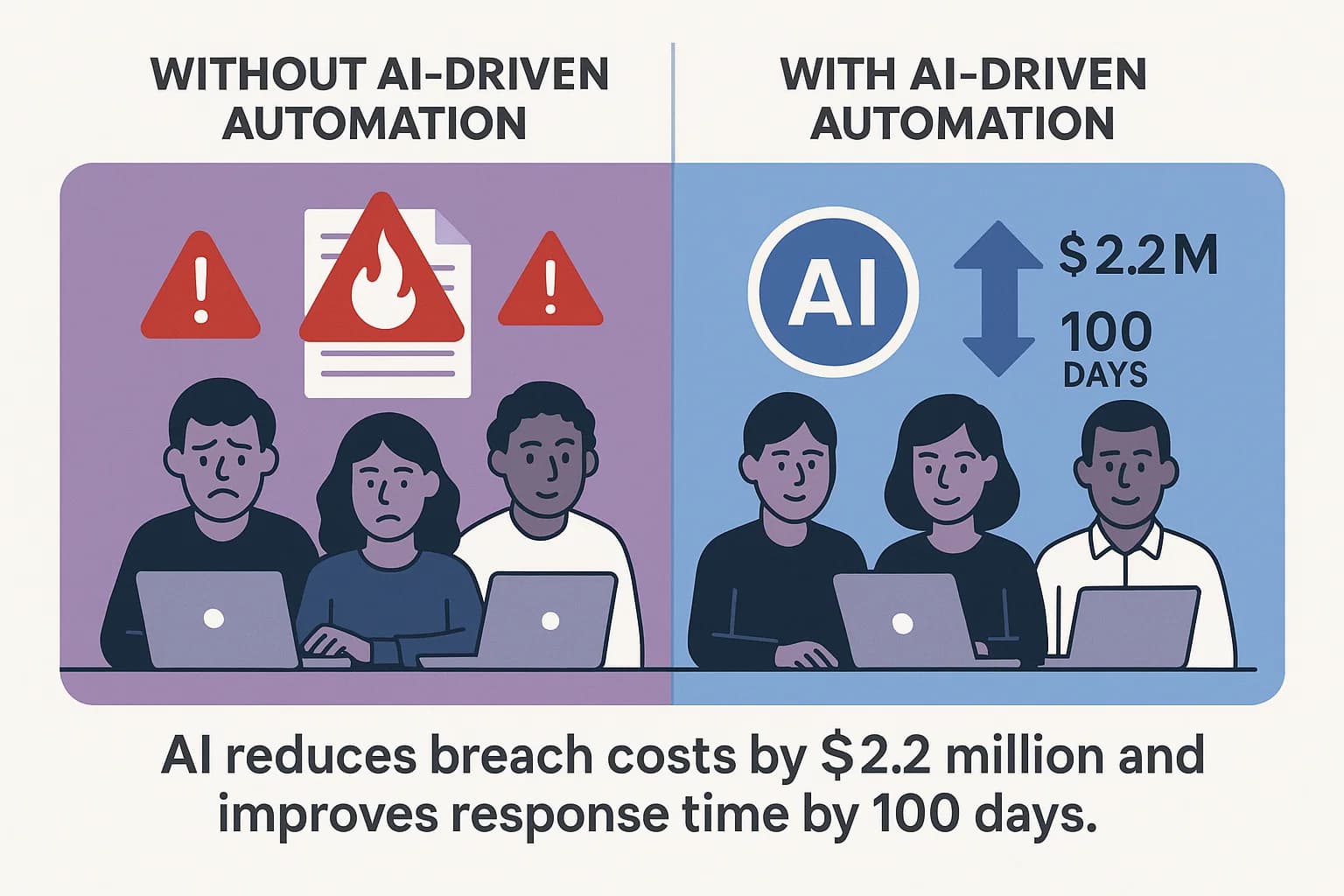
Organizations that make extensive use of security AI and automation save an average of $2.2 million in data breach costs. They also identify and contain breaches nearly 100 days faster than their peers. The key is to use AI tactically to handle high volume tasks, freeing up your human analysts for high value work like threat hunting and analyzing sophisticated intrusions, like the Real life SSRF attack examples we've dissected.
Consolidate and Optimize Your Toolset
Tool sprawl is a silent killer of productivity. A Gartner survey found that large enterprises are juggling an average of 45 different cybersecurity tools. The solution isn't just to cut vendors but to shift toward tool optimization. A platform approach, like using a unified security platform, can provide more value than a dozen disconnected point solutions.
Finally, we need to scale these solutions by adopting standardized approaches and working together.
A Blueprint for Your Workforce: Implementing the NICE Framework
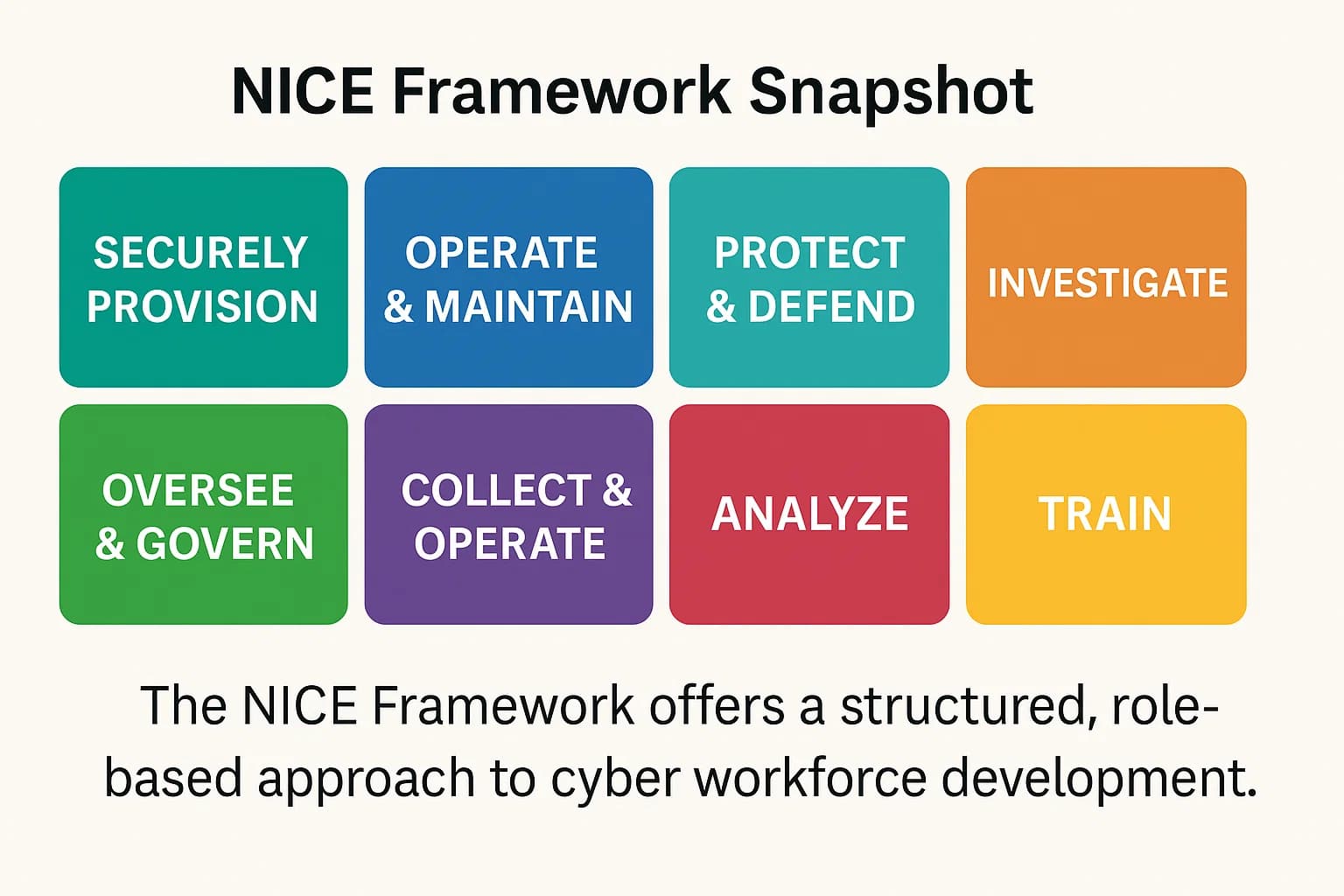
You don't have to reinvent the wheel. The National Initiative for Cybersecurity Education (NICE) Cybersecurity Workforce Framework NIST SP 800 181 provides a free, comprehensive blueprint for workforce planning. It establishes a common language for defining job roles, conducting skills assessments, and designing targeted training programs.
The Power of Collaboration
No single company can solve a 4.8 million person problem. Progress requires collective action. This includes supporting national level efforts like CISA's 2024 2026 Cybersecurity Strategic Plan, which focuses on workforce development and proactive defense.
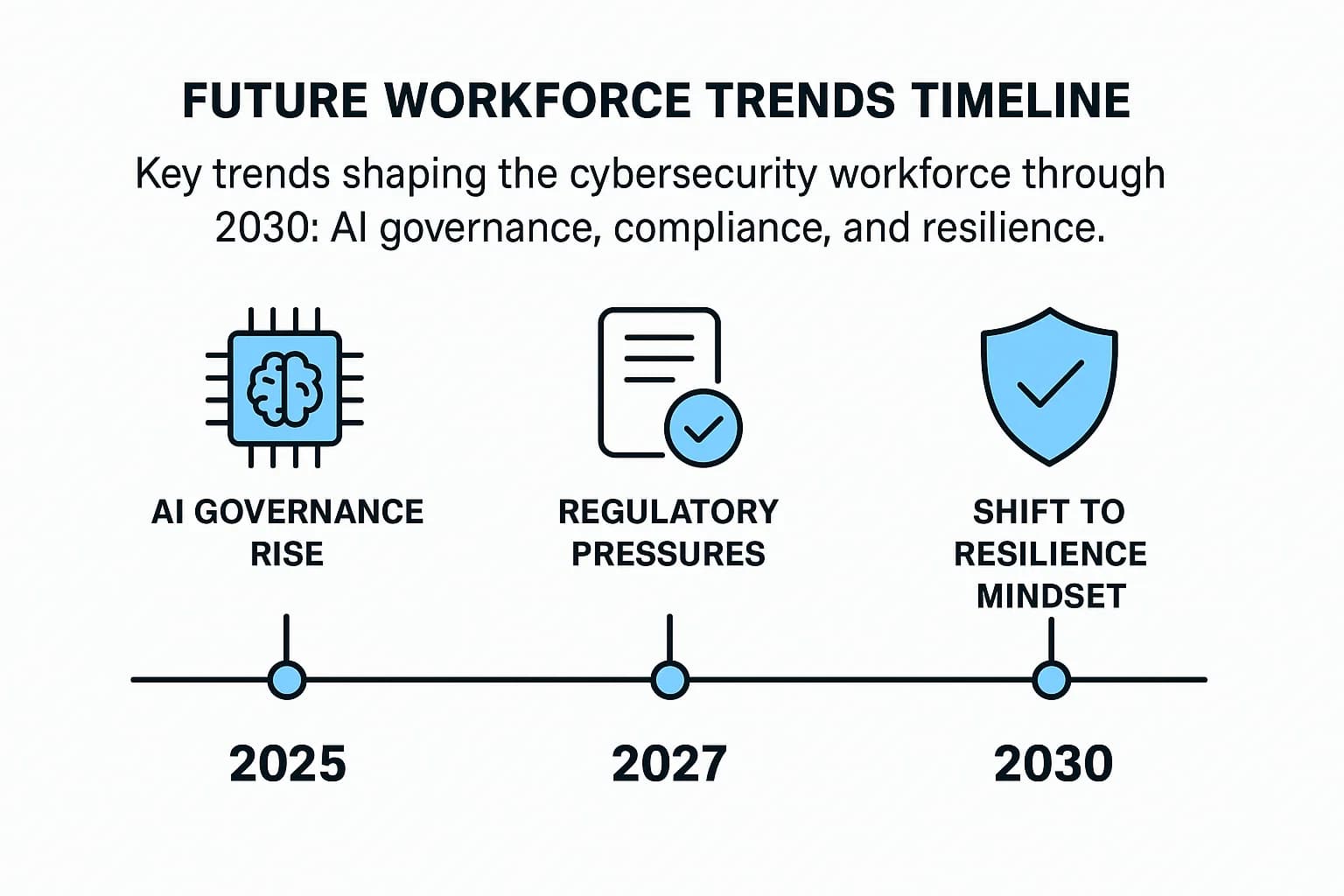
Looking ahead, the road is challenging but not without hope. The strategies being implemented today will shape the security landscape for the next decade.
In the short term (2025 2026), the gap will likely remain stubbornly wide. However, the massive global investment in education, apprenticeships, and reskilling programs is a long term play that should start to bend the curve by the late 2020s. The goal may not be to close the gap to zero but to manage it down to a sustainable level.
As this happens, the role of the cybersecurity professional will also evolve. With AI handling more routine tasks, the human expert will become more of a strategic risk advisor, a complex threat investigator, and an AI systems manager.
Three major trends will define the future of the cyber workforce:
What is the main cause of the cybersecurity skills gap in 2025?
The primary cause has shifted. While a shortage of qualified candidates persists, the #1 driver in 2025 is economic pressure, leading to budget cuts, hiring freezes, and layoffs in security departments, as reported by (ISC)².
How does the skills gap affect a company's security?
It directly increases risk. Organizations with significant skills gaps are almost twice as likely to suffer a material data breach. IBM's 2024 report shows these breaches cost an average of $1.76 million more than at well staffed companies.
What are the most in demand cybersecurity skills right now?
Top technical skills include AI/ML security (34%), cloud security (30%), and zero trust implementation (27%). However, employers are also heavily prioritizing non technical skills like communication, critical thinking, and problem solving.
Is AI making the cybersecurity skills gap better or worse?
It's doing both. AI is one of the biggest skill gaps itself, creating new demand for specialized talent. However, it's also a key solution. AI powered tools help understaffed teams work more efficiently, reducing breach costs by up to $2.2 million and speeding up incident response.
How can someone with no experience get into cybersecurity?
Focus on foundational knowledge and alternative pathways. Pursue entry level certifications like (ISC)²'s Certified in Cybersecurity (CC) or CompTIA Security+. Look for apprenticeships and "new collar" jobs that value aptitude over a four year degree. Build practical skills on platforms like TryHackMe or HackTheBox.
What are companies doing to solve the talent shortage?
Leading companies are investing in upskilling their current staff, funding certifications, creating apprenticeship programs, adopting AI and automation to augment their teams, and revising hiring practices to focus more on demonstrable skills.
Is the cybersecurity skills gap a myth?
No, it is not a myth. The data is overwhelming. With a global workforce gap of 4.8 million professionals, nearly 60% of organizations stating the gap puts them at significant risk, and a direct correlation to higher data breach costs, the skills gap is a well documented and critical business challenge.
The 2025 cybersecurity skills gap is not a single problem but a perfect storm: a massive talent deficit, a critical capabilities mismatch, and a new resource crisis fueled by economic pressures. The consequences are clear: higher risks, more expensive , and a burnt out workforce.
Simply trying to "hire more people" is a failing strategy. The path forward requires a multi pronged, resilient approach. We must fix the broken talent pipeline with apprenticeships and skills based hiring, invest in the people we already have through continuous training and wellness programs, and strategically leverage technology like AI to make our human teams stronger, more efficient, and more effective.
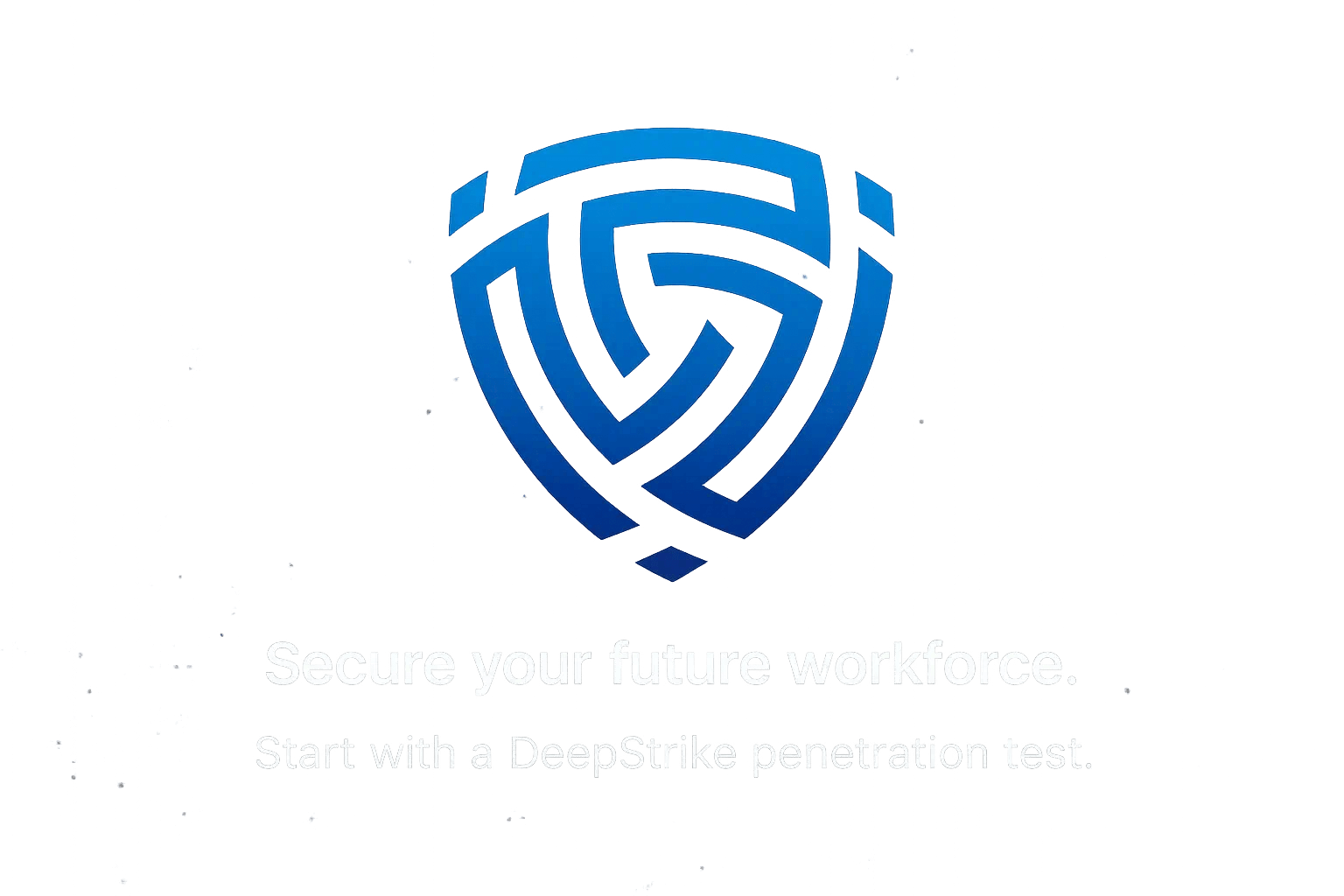
Ready to Strengthen Your Defenses?
The threats of 2025 demand more than just awareness; they require readiness. If you're looking to validate your security posture, identify hidden risks, or build a resilient defense strategy, DeepStrike is here to help. Our team of practitioners provides clear, actionable guidance to protect your business.
Explore our penetration testing services for businesses to see how we can uncover vulnerabilities before attackers do. Drop us a line, we’re always ready to dive in.
About the Author
Mohammed Khalil is a Cybersecurity Architect at DeepStrike, specializing in advanced penetration testing and offensive security operations. With certifications including CISSP, OSCP, and OSWE, he has led numerous red team engagements for Fortune 500 companies, focusing on cloud security, application vulnerabilities, and adversary emulation. His work involves dissecting complex attack chains and developing resilient defense strategies for clients in the finance, healthcare, and technology sectors.

Stay secure with DeepStrike penetration testing services. Reach out for a quote or customized technical proposal today
Contact Us